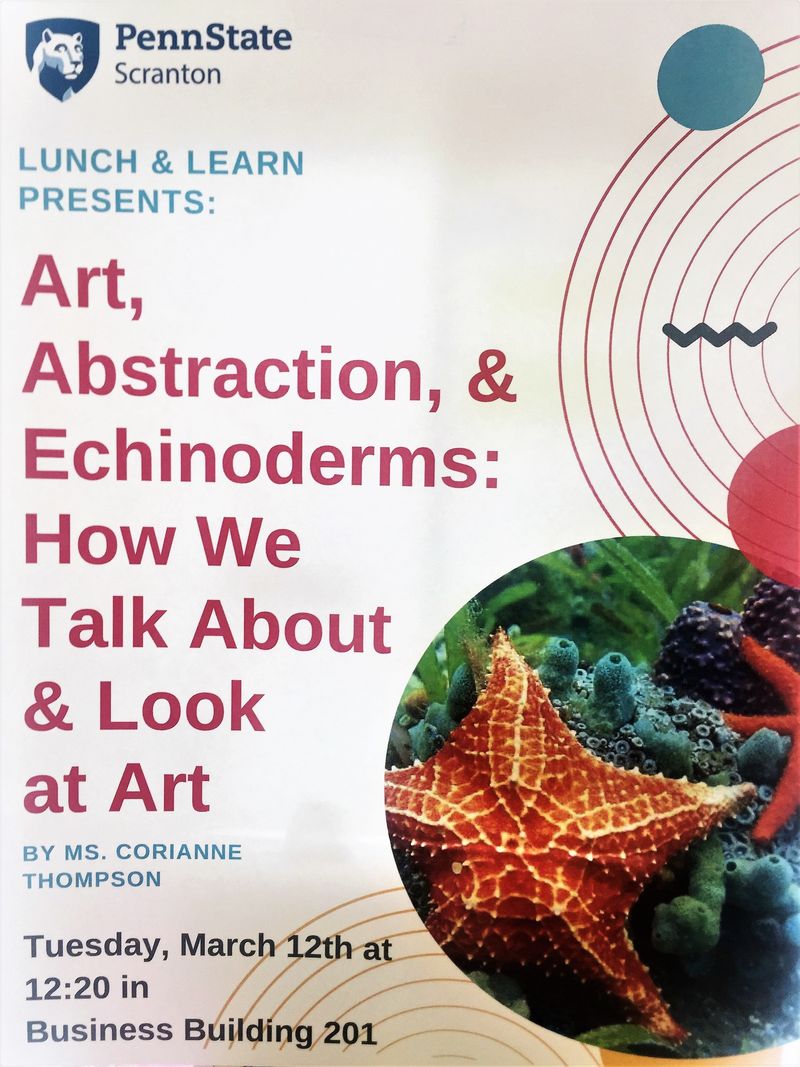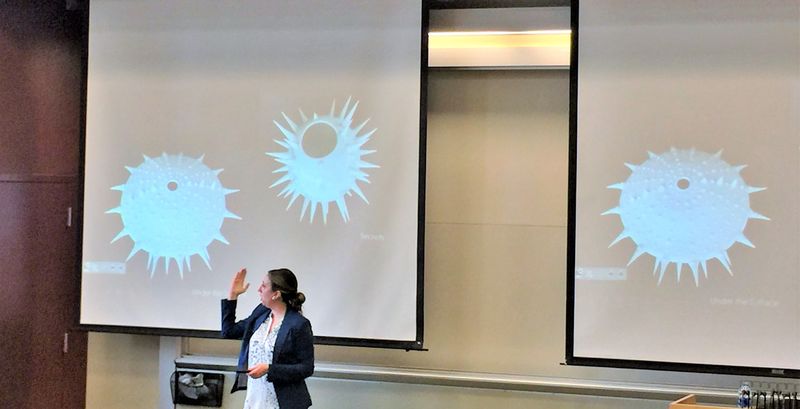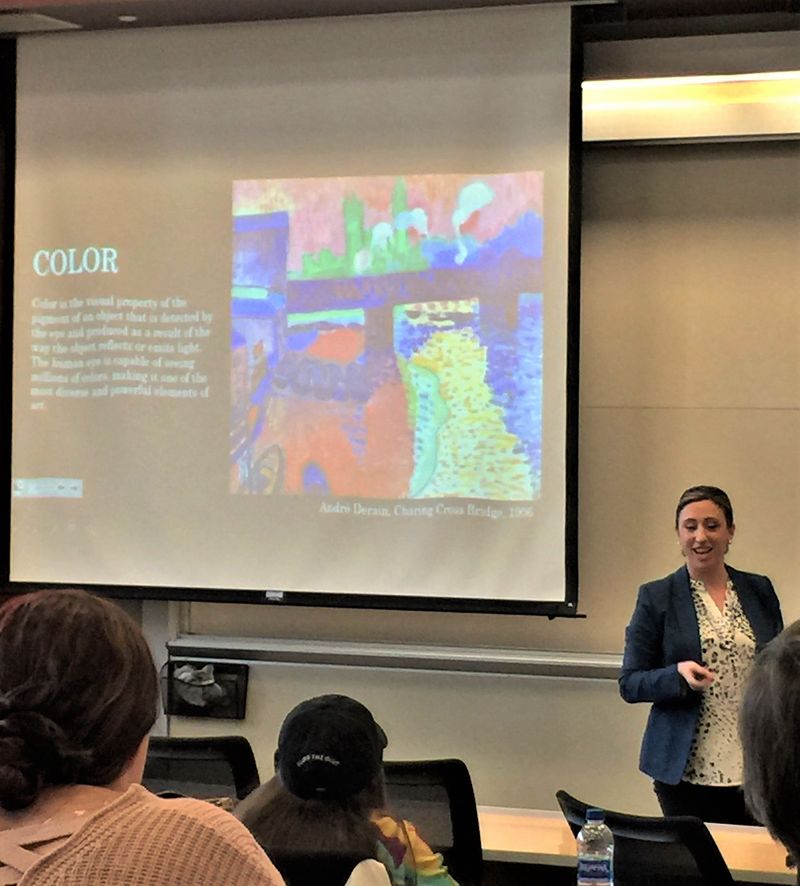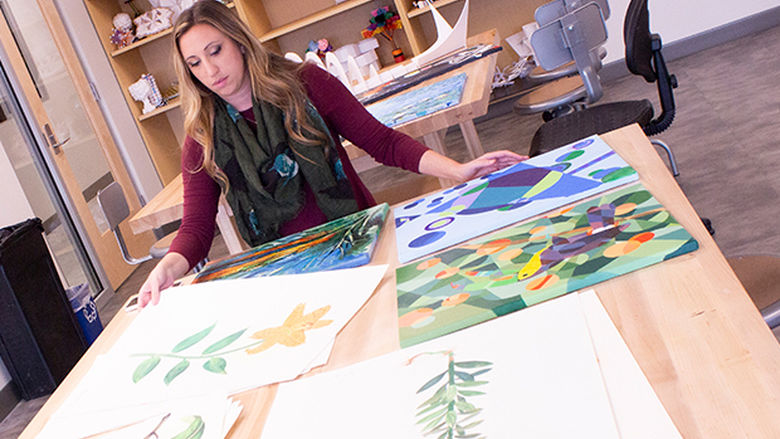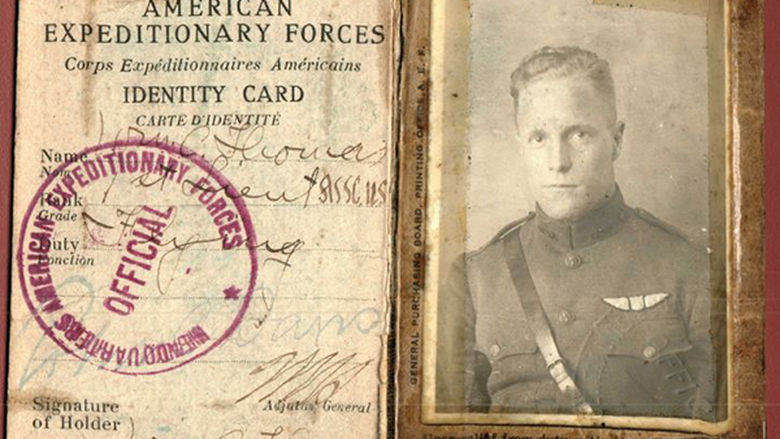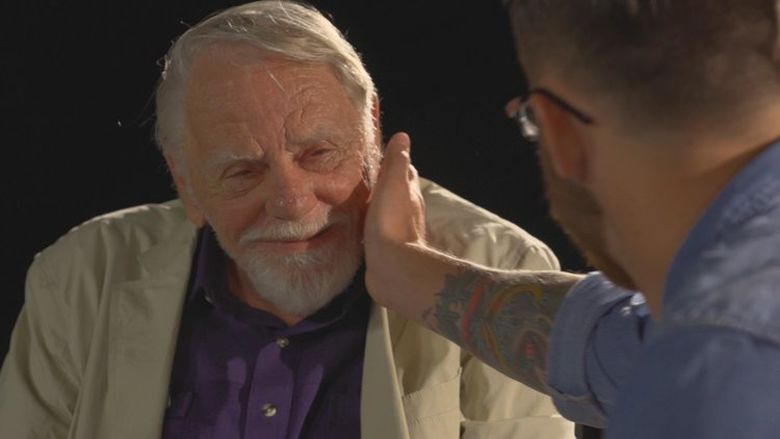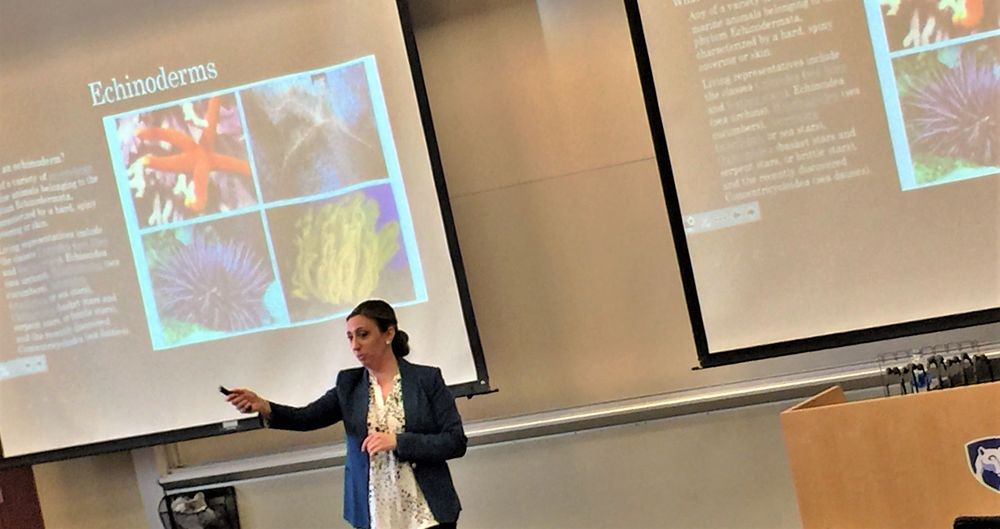
Lecturer in Art Corianne Thompson finds inspiration for her art from a variety of sources, including the ocean. Here she shows students some of the marine life that has inspired her.
SCRANTON, Pa. — Corianne Thompson, instructor in art at Penn State Scranton, touched on her wide-ranging interests during a recent Lunch and Learn lecture for the campus community.
Thompson’s lecture, “Art, Abstraction and Echinoderms: How We Look At and Talk About Art,” included visuals and insights on her marine life-inspired ceramic creations, as well as thoughts on “the language of art.”
Many of Thompson’s pieces include echinoderms, a category of sea creature that includes spiky sea urchins, radial sea stars (aka starfish) and sand dollars. Her designs also play off the flexibility and flow of the stingray.
When one looks at Thompson’s ceramic works, they will see the form holding a delicate balance of preciousness and fragility due to the medium itself, she explained.
Each piece is glazed using the ancient Japanese style of Celadon, which employs a light jade-green glaze. Her vessels and bowls are small enough to be held in the palm of the hand, and should be treated as something precious, said Thompson.
Randomly adorned with mollusks and/or coral, her pieces also feature spikes and small openings that represent a “sense of danger, but at the same time, it’s beautiful,” she said.
Thompson’s fascination with ocean creatures began as a young girl. Her dad was a marine biologist, and she was surrounded by photo-packed books about underwater creatures.
“Have you ever seen an angler fish? The angler fish gave me nightmares!” she joked.
Thompson also focused part of the lecture on the language of art.
“Looking at a piece of art is like having a conversation with a person,” she said.
From there, she discussed color, line, shape, value, space, form and texture, as well as the principles of design, such as contrast, proportion, scale, balance, unity, variety, movement, emphasis and rhythm.
As an example of rhythm, she cited Katsushika Hokusai’s “Ejiri in Suruga Province,” describing the flow and movement of the wind, papers, umbrellas and flapping clothing in the piece.
Thompson briefly touched on content, reminding the audience that “content includes subject matter, but not all works of art have a subject matter.” Case in point: abstract art, which can have color, texture, rhythm and proportions, but the content is up for interpretation by the viewer.
Formerly a ceramics instructor at Penn State Lehigh Valley, Thompson earned both her bachelor’s and master’s degrees from the Maryland Institute College of Art (MICA) in Baltimore. Besides ceramics, her diverse range of interests includes painting, jewelrymaking, drawing and interactive entertainment.
As it happens, Thompson didn’t start out passionate about ceramics, she said. She begrudgingly took it as a prerequisite for her bachelor of fine arts degree before eventually realizing she had a knack for throwing clay.
“I had to make 16 cylinders for my class,” she said. “I threw 86 of them and on the 87th one, it changed my outlook on pottery. Something happened, and it became wonderful … meditative. I found my love.”
